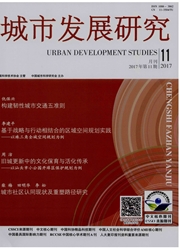

 中文摘要:
中文摘要:
国家“十一五”规划纲要正式提出,以城市群作为推进城镇化的主体形态,《国家新型城镇化规划》再次肯定了这一城镇化模式.近年来我国城市群规划建设取得了令人瞩目的成就.然而在城市群培育和发展过程中产生了诸多矛盾与制约因素,“城市群病”凸显.基于新型城镇化建设要求,通过对中国城市群的现状分析及与国外城市群的比较,归纳出我国城市群存在多而不强、分工协作不足、发展差距拉大以及跨区污染等现实问题,并从规划建设、协调机制、中心城市带动、宏观管理和阶段规律等方面总结了其产生机理.最后,从推进政府角色转变、突出市场引导作用、完善相关政策制度、加大基础设施投入等方面提出了相应的对策措施.
 英文摘要:
英文摘要:
" National Eleventh Five-Year Plan" put forward to taking urban agglomeration as the main form to promote urbanization, and "National New Urbanization Plan" affirmed it. In recent years, urban planning and construction of Chinese Urban Agglomerations have achieved rapid development. However, Chinese urban agglomerations are facing different kinds of contradictions and constraints during their development, and the " urban agglomeration disease" is highlighting. According to analysis of Chinese urban agglomerations' current situation and comparison with foreign ones, this paper summed up the problems of Chinese urban agglomerations based on requirements of the new urbanization, including much amount but lower strength, lacking of cooperation, internal development imbalances between urban and inter-regional pollution, and it summarized the impact mechanism from planning and construction, macroeconomic management errors, unperfect coordination mechanism, low central city driving and other objective factors. Finally, this paper appropriated measures to cure Chinese urban agglomerations disease, including changing the role of government, protrusion of market action, improvement in relevant policies and more investment on infrastructure.
 同期刊论文项目
同期刊论文项目
 同项目期刊论文
同项目期刊论文
 期刊信息
期刊信息
